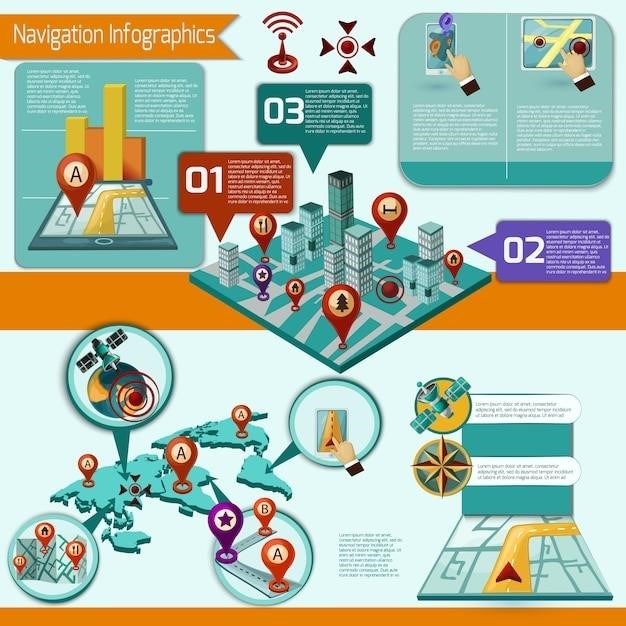Finding Printable New Orleans Tourist Maps
Numerous resources offer free printable New Orleans maps. Official tourist maps are available at visitor centers and online. National Geographic also publishes a detailed New Orleans city map.
Free Printable Maps Online
Several websites provide free downloadable PDF maps of New Orleans. These often include points of interest, major streets, and public transportation routes. Look for options offering detailed street maps, focusing on areas like the French Quarter or Garden District, if you have a specific area of interest. Some sites may offer customizable maps, allowing you to select which points of interest are highlighted. Remember to check the date of the map to ensure accuracy; street layouts and attractions can change over time. Websites dedicated to travel or tourism in New Orleans are a good place to start your search. Always verify the source’s credibility before downloading and printing. Ensure the PDF is clear and readable before printing to avoid wasted paper. Consider printing on durable paper, especially if you plan to carry the map outdoors. Many websites offer high-resolution PDFs perfect for printing. Happy exploring!
Where to Find Official Tourist Maps
The official New Orleans tourism website is an excellent starting point for locating and potentially downloading printable maps. Many visitor centers throughout the city also stock physical copies of maps, often free of charge. These maps frequently include details on major attractions, historical sites, and transportation options. Check the New Orleans Convention and Visitors Bureau website; they often provide links to downloadable maps or information on where to pick them up in person. Local hotels and businesses may also have complimentary maps available for guests or customers. Look for maps that clearly mark public transportation routes, particularly if you plan to utilize streetcars or buses. Some maps may highlight specific neighborhoods or districts, useful for focusing your exploration. Remember to inquire about updated maps if you are visiting during a period of construction or significant changes to the city layout. A well-marked map can enhance your sightseeing experience and ensure you don’t miss any key destinations.
National Geographic’s New Orleans Map
National Geographic’s City Destination map of New Orleans provides a comprehensive guide for exploring the city. While the provided text mentions a 2015 publication with dimensions of 17.75 x 24.75 inches, availability and current print runs should be verified through National Geographic’s website or reputable booksellers. The map likely details key attractions, neighborhoods, and points of interest, offering a convenient overview of the city’s layout. Its scale and level of detail may be suitable for both broad planning and more specific navigation within particular areas. Features such as a street index, legend, and possibly points of interest within the French Quarter, Garden District, and other significant neighborhoods, are likely included. Check online retailers and bookstores for potential availability; purchasing directly from National Geographic might ensure the most up-to-date version. Consider whether a physical map or a digital alternative better suits your travel style and needs.

Navigating New Orleans with Maps
Interactive online maps, transportation maps, and detailed downtown New Orleans maps aid navigation. Utilize these resources for efficient exploration.
Interactive Online Maps
Leverage the power of interactive online maps for seamless New Orleans exploration. Websites like Google Maps and others provide detailed street views, points of interest, and real-time traffic updates, ensuring effortless navigation. These digital tools allow you to plan your routes in advance, discover hidden gems, and easily locate specific attractions, restaurants, or accommodations. The interactive nature of these maps enables you to zoom in and out, explore different neighborhoods, and get directions tailored to your preferred mode of transportation, whether it’s walking, driving, public transit, or even cycling. Many interactive maps also integrate user reviews and ratings, helping you make informed decisions about where to visit and what to experience. This dynamic, user-friendly approach ensures a smooth and enjoyable sightseeing experience in the vibrant city of New Orleans.
Using Transportation Maps
Efficiently navigate New Orleans’ unique transportation network using specialized maps. These maps highlight bus routes, streetcar lines, ferry services, and even walking paths, providing a comprehensive overview of the city’s transit options. Understanding the layout of these systems is key to optimizing your travel time and avoiding unnecessary detours. Many transportation maps are available online, offering interactive features like route planning and real-time updates on service schedules. Some maps may also include information on parking availability, taxi stands, and ride-sharing zones, adding further convenience to your journey. By utilizing a dedicated transportation map, you can effortlessly explore various neighborhoods, access popular attractions, and experience the city’s diverse transportation landscape efficiently and effectively. Remember to check for updates on schedules and potential disruptions before embarking on your travels.
Downtown New Orleans Map
A dedicated downtown New Orleans map is invaluable for exploring the central business district and its surrounding attractions. These maps typically highlight key landmarks such as the Caesars Superdome, the historic French Market, and various museums and galleries. Detailed street layouts and points of interest allow for easy navigation on foot or by public transportation. Many downtown maps also feature information on parking facilities, public transportation stops, and nearby restaurants and shops, enhancing the overall visitor experience. The inclusion of a legend clearly identifying streets, points of interest, and transportation routes helps users to quickly locate specific locations. Utilizing a detailed downtown map allows for efficient exploration, minimizing time spent searching for destinations and maximizing the time spent enjoying the unique atmosphere and rich history of downtown New Orleans. Consider downloading a PDF version for offline access.
Safety and Navigation Tips
Prioritize well-lit areas, especially at night. Avoid areas known for high crime rates. Utilize reliable transportation and consider travel insurance for peace of mind.
Safe Areas for Tourists
While New Orleans boasts a vibrant and welcoming atmosphere, prioritizing personal safety is crucial for a worry-free trip. The French Quarter, though lively, generally sees a significant police presence, particularly during peak tourist seasons. The Garden District, known for its stunning architecture and upscale shops, also maintains a relatively safe environment, especially during daylight hours. However, even in these areas, maintaining awareness of your surroundings and avoiding poorly lit streets or isolated areas after dark is recommended. Staying in well-populated areas and utilizing well-lit, main thoroughfares is a proactive safety measure.
Consider using ride-sharing services or taxis, especially at night, to minimize the risk of walking alone in less-populated areas. Remember that even in safe areas, petty theft can occur, so keeping valuables secure and being mindful of your belongings is essential. Familiarizing yourself with your hotel’s location and the surrounding neighborhood before venturing out can provide additional peace of mind. By understanding the general layout of the city and being aware of your surroundings, you can significantly enhance your safety and enjoyment during your New Orleans experience.
Avoiding High-Crime Areas
To ensure a safe and enjoyable New Orleans trip, it’s essential to be aware of areas with higher crime rates. While most tourist areas are generally safe, certain neighborhoods should be approached with caution, especially at night. Central City, for instance, is mentioned as having a high crime rate and lacks significant tourist attractions, making it advisable to avoid this area. Similarly, while exploring areas outside the main tourist zones, exercise extra vigilance and avoid venturing into unfamiliar neighborhoods alone, especially after dark. Utilize well-lit streets and main thoroughfares whenever possible.
Before your trip, research specific areas you plan to visit and consult up-to-date safety information from reliable sources. Consider using online mapping tools that provide real-time safety data or integrate crime statistics into their maps. Avoid displaying expensive jewelry or electronics openly, and be mindful of your surroundings, especially in crowded areas where pickpocketing can occur. By being aware of potentially unsafe areas and practicing common-sense safety precautions, you can significantly reduce your risk while exploring the city.
Utilizing Public Transportation Maps
New Orleans offers a variety of public transportation options, and understanding how to use the associated maps is key to efficient navigation. The city’s streetcar system, a popular tourist attraction in itself, is well-documented on various maps, both online and in print. These maps typically show the various streetcar lines, their routes, and the locations of stops. Many downloadable PDF maps will feature this information prominently, often color-coded for easy identification of different lines. Beyond the streetcars, bus routes are another crucial part of the public transit system. Detailed bus route maps are usually available on the city’s official transportation website and sometimes included as supplementary information in tourist maps.
When planning your itinerary, integrate the public transportation maps to identify the most convenient routes between destinations. Look for maps that indicate transfer points and potential walking distances between stops and your final destination. Consider using online mapping services that incorporate real-time transit information to account for potential delays. Remember that some maps might emphasize tourist attractions while others focus purely on transportation routes, so choosing the right map type for your needs is vital for a smooth and efficient trip.

Exploring Specific Areas
Detailed maps focusing on the French Quarter and Garden District offer focused exploration. These highlight key attractions, restaurants, and points of interest within each area.
French Quarter Map
A dedicated French Quarter map is invaluable for navigating this historic district. Its narrow streets and abundance of attractions can be overwhelming without a detailed guide. Look for maps that highlight key landmarks like Jackson Square, St. Louis Cathedral, and Bourbon Street. Many online resources and visitor centers offer these specialized maps, often pinpointing popular restaurants, bars, and shops. Consider maps showing the streetcar routes, as this is a convenient way to explore the area. These specialized maps help visitors efficiently explore the French Quarter’s unique architecture, vibrant culture, and bustling atmosphere, maximizing their sightseeing experience. Don’t forget to check for maps indicating nearby parking options, especially if you plan on driving. Walking is often recommended, but a map can still help you plan your route and avoid getting lost in the charming labyrinthine streets.
Garden District Map
Exploring New Orleans’ Garden District requires a specialized map to fully appreciate its unique charm. This elegant neighborhood boasts stunning architecture, lush gardens, and historic landmarks. A detailed map will highlight the key streets, showcasing the impressive mansions and beautiful green spaces. Look for maps that identify significant houses, such as the Hermann-Grima House or Lafayette Cemetery No. 1. Many online resources provide downloadable PDFs or interactive maps of the Garden District, some even including walking tour routes. These maps often pinpoint cafes, shops, and other points of interest, enhancing your exploration. Consider using a map that includes information on public transportation options, as navigating the area on foot can be extensive. A well-designed Garden District map makes it easy to plan your route and appreciate the architectural details and historical significance of this captivating neighborhood.



